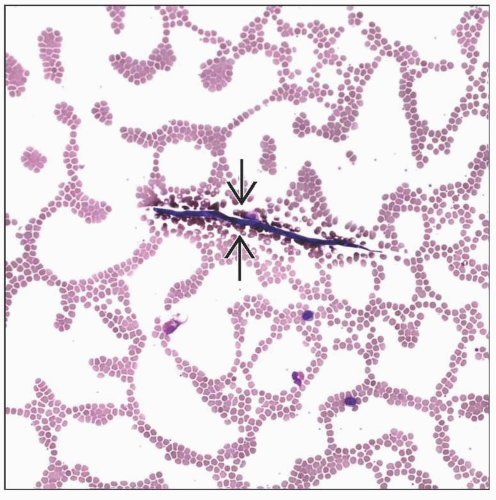Helminthic Infections
Carla S. Wilson, MD, PhD
Key Facts
Terminology
Helminth derived from Greek word for “worms”
Etiology/Pathogenesis
Most common human infection in developing countries
Climate and topography determine distribution
Chronic infection leads to constant immune activation
Dominant Th2 type of cytokine profile
High immunoglobulin E levels
Proliferation and activation of eosinophils
Clinical Issues
Morbidity is associated with worm burden
Individuals often have > 1 infection
Mass drug administration of antihelmintic drugs
Microscopic Pathology
Anemia common
Blood loss, iron deficiency, vitamin B12/folate deficiency, anemia of chronic disease
Iron deficiency anemia is particularly prevalent with hookworm infections and schistosomiasis
Increased eosinophils (peripheral blood, bone marrow, tissue)
Associated with presence of worms in tissues
Circulating microfilariae seen in infections with
Wuchereria bancrofti
Brugia malayi
Loa loa (African eye worm)
Speciate pathogenic microfilariae based on placement of nuclei in tail
 Eosinophilia is seen in helminthic infections caused by worms that invade tissue. Worm-induced cytokine release activates the innate immune system in which eosinophils play a key role. |
TERMINOLOGY
Synonyms
Parasitic worms
Definitions
Helminth derived from Greek word for “worms”
2 major phyla infect humans
Nematodes (roundworms)
Platyhelminths (flatworms)
Trematodes (flukes)
Cestodes (tapeworms)
ETIOLOGY/PATHOGENESIS
Infectious Agents
Worm lifecycle includes egg, 1 or more larval forms, adult
Does not replicate in human host (except Strongyloides stercoralis)
Human transmission occurs through
Ingestion of eggs
Penetration of skin by larvae
Inoculation of larvae by insect bites
Important circulating microfilariae include
Wuchereria bancrofti
Brugia malayi
Loa loa (African eye worm)
Heterogeneity in worm burden seen among individuals
Intensity of infection for many parasitic worms has genetic basis
S. mansoni infection intensity linked to chromosomal region 5q31-q33
Household clustering
Immunobiology
Type 2 immunity important in host defense against helminths
Rapid activation and employment of cells from
Innate immune system (eosinophils and basophils)
Adaptive immune system (CD4[+] T cells, Th2 pathway)
Synthesis of multiple cytokines (i.e., IL-4, IL-25)
CLINICAL ISSUES
Epidemiology
Incidence
Most common infection in developing countries
Climate and topography determine distribution
If transmitted by vector, need host and vector in same location
Loiasis: Chrysops spp. tabanid flies
Lymphatic filariasis: Anopheles, Culex, Aedes spp. mosquitoes
Onchocerciasis: Simulium spp. blackflies
Age
Reduction in intensity of some human helminth infections occurs with age
Ascaris lumbricoides, Trichuris trichiura, and schistosomes
Possibly related to host immunity
Some infections increase in intensity with age, peaking in adulthood
Hookworm
Filarial infections
Presentation
Morbidity is associated with worm burden
Often, individuals have multiple infections
Multiple species of helminths (polyparasitism)
Coinfections with malaria or HIV/AIDS
Additive effects on clinical findings (i.e., severe anemia)
Symptoms relate to cytokine synthesis
IgE production, eosinophilia, tissue reaction
Chronic infections
Persistent and insidious health problems
Stay updated, free articles. Join our Telegram channel

Full access? Get Clinical Tree




